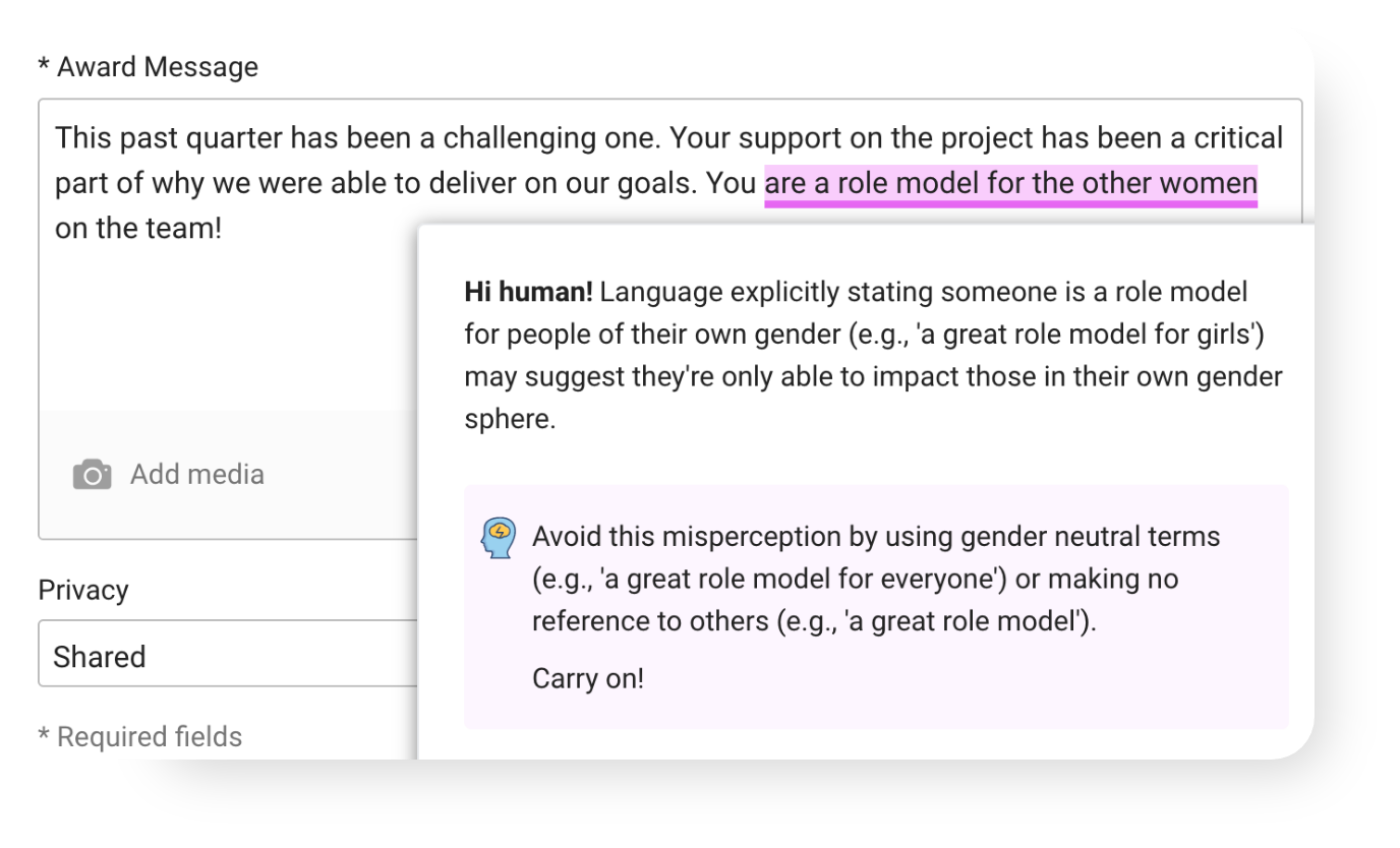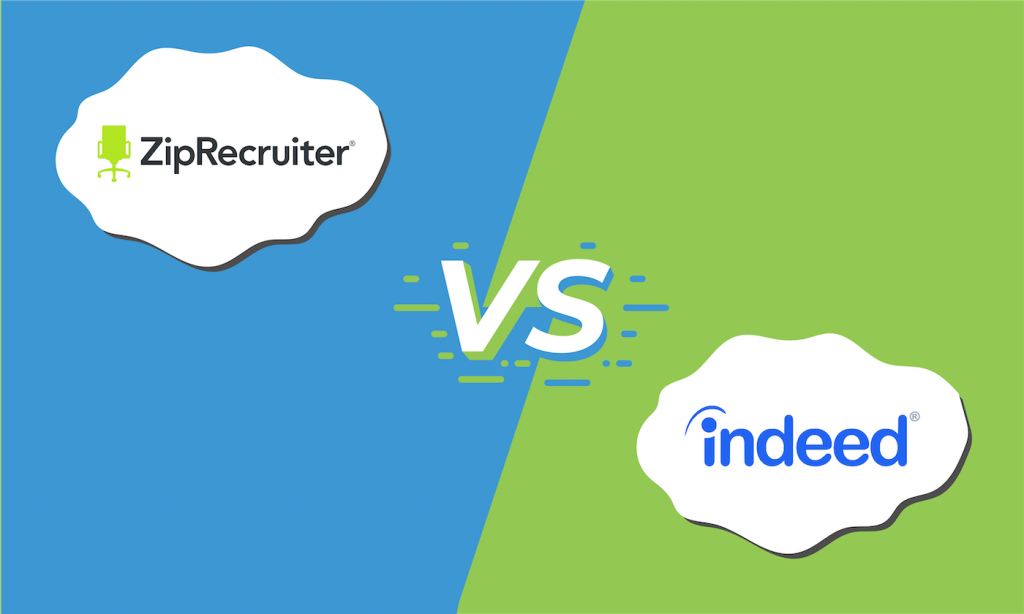Key takeaways
- DEI training aims to foster a more inclusive and equitable workplace by educating employees about the systemic barriers, biases, and inequality marginalized groups face and encouraging behavioral change.
- Despite inconsistent research and changing ideologies, DEI training remains a valuable method for developing positive and psychologically safe workplaces.
- When developing a DEI training program, consider your organization’s and employees’ location, demographics, accessibility needs, special interests, and compliance requirements.
Beyond my more than six years of experience in HR administration, I’ve researched, followed, and written extensively about DEI in the workplace. I’ve examined everything from the differences between culture and values to supporting the mental health of your workforce. I’ve also participated in multiple DEI training and seminars, which have given me inside knowledge of the tips and tools I can share with you.
- Randi Bryant: DEI Disrupter at Bryant Consulting Group, LLC.
- Odellé Joubert: Chief Operating Officer at Dentaly Go.
- Pallavi Pareek: Founder and CEO of Ungender.
Mar. 17, 2025: Jessica Dennis reviewed the article for accuracy and freshness. She also added discussions regarding the effectiveness of DEI training, recent ideological shifts, and insights from leaders who’ve implemented DEI training in the workplace.
What is DEI training?
Diversity, equity, and inclusion (DEI) training is a workplace program that teaches staff how to interact and communicate more effectively with colleagues from diverse backgrounds. It also discusses the barriers to workplace success minority groups face in an effort to create fairer and more equitable employment processes.
Rather than focusing purely on awareness training, most modern DEI training plans teach employees how to recognize and respond to workplace injustices through scenario-based learning modules. You can conduct this training in person or virtually through e-learning programs.
Types of DEI training
DEI training comes in many forms, but some of the most common types of training include awareness, unconscious bias, allyship, bystander intervention, cultural competency, and job-specific.
Awareness training is a baseline approach to DEI in which employees learn about their organization’s diversity and DEI values. It typically also discusses various forms of discrimination and key labor laws, such as Title VII of the Civil Rights Act and the Americans with Disabilities Act.
Sometimes called implicit bias or cultural sensitivity training, unconscious bias training helps employees identify their deeply held, often unintentional biases and learn how to better empathize and communicate with different colleagues. The training discusses the various types of implicit biases, such as halo, confirmation, and affinity, and provides participants with strategies to combat them.
Allyship training focuses on teaching employees from privileged groups how to listen to, support, and provide platforms for marginalized colleagues. It provides strategies for staff to recognize biases and microaggressions, plus ways to stand up for underrepresented groups in the event of injustices.
Bystander intervention training is scenario-based and teaches employees how to intervene or otherwise support colleagues who are victims of harassment or discrimination. The training usually offers ways to defuse tense situations and address both aggressors and victims.
Cultural competency training teaches employees to understand, support, and interact with people of different backgrounds and cultures. It involves recognizing cultural differences, addressing the communication methods of various groups, and developing empathy and adaptability for differing work styles.
Cultural competency is also a critical component of understanding the different goals and motivations of global customers, vendors, and employees.
Some specialized DEI training teaches employees how to support DEI values and initiatives in their specific roles. For example, you might train managers how to combat implicit bias during the performance review process or recruiters how to implement diverse and inclusive hiring practices.
You may even train product engineers, salespeople, and customer representatives on various DEI concepts to develop products that serve a wider community, increasing revenue and improving your brand’s reputation.
Common DEI training topics
DEI training topics can be as broad or specific as your company needs. Most types of DEI training cover each of these topics to some extent:
- Unconscious/implicit bias and stereotypes
- DEI statistics for your own company
- Historical context about specific awareness and religious holidays
- Religious sensitivity.
- Cultural awareness and belonging; cultural competency
- Workplace scenarios
- Anti-harassment
- Recognizing and preventing microaggressions
- Inclusive leadership
- How to be an ally
- Preventing tokenism
- Avoiding discrimination
- Recognizing privilege
DEI training in the news
With the new 2025 presidential administration in the U.S., DEI initiatives face unprecedented pushback. This came to a head following two executive orders: one ending DEI programs, initiatives, and roles in the federal workforce, and the other ending race and gender affirmative action requirements for federal agencies and contractors. As of this writing, the legality of these orders is still being argued in court.
Despite this, DEI training remains legal; a 2025 federal court even ruled that discomfort from DEI training is not discriminatory. And, unlike the federal government, some states still mandate DEI training, like implicit bias training for specific roles in California.
That said, DEI remains a hot-button issue. Consider the following approaches to your DEI training in this current environment:
- Tie it to business outcomes: Frame your DEI training around goals like reducing employee turnover, improving engagement, or increasing productivity.
- Call it something different: According to DEI Keynote Speaker Randi Bryant, “Smart companies pivot their language while keeping the substance. They double down on collecting data to prove the business impact.” Use language like “talent optimization” or “innovation strategies” to describe your DEI programming instead.
- Make it voluntary: Don’t mandate DEI training for employees. By making it voluntary, employees are more likely to be receptive to the messaging.
- Double-check with legal counsel: Discuss and send your DEI training materials to a labor law attorney to ensure compliance. A PEO or your Employment Practice Liability Insurance may offer free resources to help.
Why is DEI training important?
DEI training benefits existing employees, future recruits, and even the customers and partners that interact with your company through the following ways.
Unconscious bias and cultural sensitivity training make employees more thoughtful about their language and communication with people of different backgrounds. This more considerate approach to communication creates a better experience for all employees, customers, and partner organizations that regularly interact with your team.
Odellé Joubert, Dentaly Go’s Chief Operating Officer, notes that cultural competency training for her international patient coordinators improved the customer experience.
“A real turning point was when a patient from the Middle East felt uncomfortable with a male coordinator discussing her treatment,” she says. “Because of our training, our team immediately adapted, assigned a female coordinator, and ensured she felt respected.”
Joubert explains that the training was key to ensuring different communication styles, expectations, and sensitivities of their global clientele.
Unconscious bias training that provide tactical behavioral changes reduce workplace harassment and other behaviors that hurt workplace culture.
Studies support this. A 2017 study found that implicit bias awareness paired with “habit-breaking intervention,” or evidence-based strategies to overcome bias, created behavior changes. In fact, participants who learned these strategies were more likely to object to racial stereotyping even two years after the initial study.
DEI training gives all employees a stronger network of support among their colleagues since it provides tools for them to recognize and act on workplace injustices.
Pallavi Pareek, founder and CEO of Ungender, explains how her company’s scenario-based training on real workplace situations resulted in a “35% increase in workers feeling valued and heard” for one of its clients. Employees felt more comfortable voicing their concerns, knowing that management and coworkers would listen, empathize, and take action.
The point of DEI training is not to recruit more talented people to your organization. However, the presence and visibility of strong DEI values can bolster recruitment and retention efforts, especially for minority and underserved groups.
This was certainly the case for one of Ungender’s clients. Within a year of implementing DEI training, Pareek notes that “Retention rates among underrepresented employees improved by 20%, and diverse hiring increased as the company built a more inclusive brand reputation.” Successful DEI training allowed recruiters to find talent through more diverse avenues while contributing to the company’s retention efforts.
As the most diverse generations to date, Millennial and Gen Z employees place immense value on DEI.
According to RippleMatch’s 2022-2023 Diversity in the Workplace report, 75% of Gen Z job candidates would reconsider joining a company if they weren’t satisfied with its DEI efforts. Meanwhile, 2023 data from Eagle Hill Consulting notes that 77% of Gen Z and 63% of Millenials find DEI a key factor when considering a company for employment.
Crafting a robust DEI training program is one way to demonstrate your company’s commitment to these values and prepare yourself for the new workforce.
Successful DEI training that inspires behavior change creates working environments where diverse groups feel comfortable sharing innovative ideas, challenging the status quo, and working in a way that’s best for them.
Mckinsey’s 2023 Diversity Matters Even More study highlights that women and ethnic minorities in executive teams of top-quartile companies had a 39% greater likelihood of financial outperformance than their bottom-quartile peers. This indicates that more diversity in leadership is a major contributor to organizational success, likely from unique perspectives that allow businesses to enter and capture new markets.
How effective is DEI training?
DEI training can be effective if done correctly.
Unfortunately, many businesses only hold one-off DEI training sessions that do little to instill long-lasting organizational change. Add that to unclear training goals and difficult-to-quantify factors like employee feelings, and it’s unsurprising that DEI training effectiveness studies yield mixed results.
Randi Bryant also explains that companies tend to focus on representation numbers to determine DEI training effectiveness rather than on employee happiness and fair employment practices. Simply having diverse representation doesn’t actually demonstrate that your company operates with an inclusive and respectful mindset. “[It’s] like measuring the success of your diet by how many vegetables you buy, not whether you actually eat them!” she says.
But more recent studies have noted strategies that improve the likelihood of DEI training effectiveness. They include:
- Developing a DEI strategy and infusing DEI goals into overall business initiatives. (Harvard Business Review, 2021)
- Identifying DEI training KPIs and holding leaders accountable. (Harvard Business Review, 2021)
- Making DEI training voluntary. (Wall Street Journal, 2023)
- Conducting ongoing DEI training sessions. (Translational Behavioral Medicine, 2023)
- Adjusting DEI training to key moments in the employee life cycle. (Harvard Business School, 2025).
Putting theory into practice
Let’s say that, like many employers, you conduct a two-hour DEI training seminar during employee onboarding, but that’s it. If you’re serious about creating lasting changes in your workforce, here’s how you can use the strategies above to improve training effectiveness:
- Tie DEI training to your company’s culture and values. For example, at TechnologyAdvice, one of our core values is “value each other.” We also had a business goal of employees participating in at least one DEI training or event during the year.
- Demonstrate leadership buy-in. If upper management provides a budget and actively participates in lessons alongside individual contributors, employees will know that DEI training is important.
- Identify DEI training goals. To create a psychologically safe working environment, survey employees on workplace culture before you begin DEI training and set SMART goals to improve standards. An example includes raising eNPS scores by a certain percentage.
- Make DEI training ongoing. Hold DEI training sessions at important points in the employee journey, not just during new hire onboarding. For example, having implicit bias training before performance reviews allows employees to use the skills they learned in a real-world setting, such as when writing fair appraisals and deciding on promotions.
5 ways to engage employees in DEI training
Use these five strategies to start or upgrade your DEI training.
1. Bring in guest speakers and trainers
Third-party experts can offer engaging, personalized training on various diversity topics. These experts may focus on more niche topics that are important to your organization, such as the experiences of military veterans in the workplace or ways to support colleagues with neurodiversity and invisible disabilities and illnesses.
If you choose to bring in a guest speaker or trainer, make sure to vet their professional background, values, and experience as a training facilitator before hiring them.
2. Conduct surveys to determine training gaps
To understand where your workforce needs DEI development, leverage employee engagement software to conduct surveys that assess what employees do and don’t know about the topic(s) before and after a DEI training session. This information can help contextualize broader DEI metrics and provide a roadmap for future programming.
Standard quantitative evaluations, like the ones in Formsite’s Diversity Training Feedback Form Template, provide a baseline for training effectiveness and engagement. Surveys can also include open-ended response sections that allow employees to share comments, questions, and concerns about where they see gaps in organizational DEI awareness.
3. Offer a variety of accessible training formats
Not everyone learns the same way, so it’s important to offer DEI training opportunities in different formats. Besides mandatory training programs for compliance purposes, consider providing other ways for people to learn, like book clubs, game-based learning opportunities, facilitated discussion groups, multicultural activities, and even VR training.
Even more crucial, make sure all of your training materials are accessible. For online training, use an accessibility checker to check that video, audio, font size, and colors are accessible to all. Any video or audio training should also include closed captions for deaf or hard-of-hearing staff.
4. Use effective training software and programs
Many learning management systems (LMS) and e-learning vendors offer diversity-focused training modules. For the best DEI training experience for your employees, look for software that provides self-paced, engaging learning modules.
Examples of DEI training resources include:
- Paradigm Reach offers on-demand DEI training videos, self-guided exercises, and additional learning tools and resources on various topics.
- ProProfs’ Training Maker allows administrators to create their own compliance-focused learning courses.
- SweetRush’s Diversity & Inclusion Training combines real-world scenarios, case studies, and action-planning activities that administrators can customize.
- Learning Pool’s Equality, Diversity, & Inclusion Collection is a blend of pre-made and customizable online learning content that is story-driven and gamified.
- Workhuman Cloud’s Inclusion Advisor gives users live, AI-powered guidance on how they can avoid unconscious bias in their writing:

5. Provide regular involvement opportunities beyond training
DEI training should not be your only tool to get your staff talking about important diversity topics.
To expand DEI involvement opportunities, try offering mentorship programs, employee resource groups (ERGs), company events based on special interests, and opportunities for community involvement. The best way to engage employees in DEI efforts is to tap into and build on the passion many employees already have for these topics.
Tips for implementing DEI training in your organization
Try the following tips for enhancing your DEI training program.
Commit to year-round training
“My personal pet peeve is the ‘one and done’ mindset,” says Randi Bryant when discussing the misconception that DEI training is a one-off event. Besides employees forgetting about the training, it’s unlikely that one training will create impactful company culture changes.
Instead, DEI training should be a continual, year-round commitment. Besides formal instructor-led lessons or self-guided courses, offer employees plenty of opportunities to participate in DEI training through mentorship programs, committees, events, and facilitated discussions.
Design training that is specific to your organization
Many of the best DEI training programs allow organizations to customize the program according to their particular needs. Consider your organization’s roles, responsibilities, regions, industry-specific issues, and other key characteristics when designing a DEI program.
For example, one thing to keep in mind is your organization’s size. If you’re a small organization, your DEI training will likely focus on teaching respectful and inclusive communication between employees and customers. But if you’re larger, your DEI training can educate leadership on dismantling systemic issues like unfair hiring, pay, and promotion practices.
Need step-by-step instructions for creating a training program? Check out How to Create a Training Program for Effective Employees.
Get buy-in from organizational leaders and managers
The most successful DEI training programs are supported and championed by leaders throughout the company. You should explain to leaders why this training is valuable and teach them how to communicate that value to their direct reports.
Other clear ways for leadership to demonstrate support for DEI training include hiring dedicated DEI trainers, setting aside training budgets, and actively participating in and following up on learnings with staff.
DEI training FAQs
The average cost of DEI training depends on multiple factors, including the type, frequency, delivery method, and size of your organization. Generally, hiring third-party DEI trainers, consultants, or keynote speakers for a one-time seminar can cost between $500 and tens of thousands of dollars.
Enrolling employees in DEI courses through platforms like Coursera or Gusto can sometimes be cheaper, depending on your employee count and training goals. For example, Gusto’s Diversity and Inclusion Essentials training starts at $19.95 per person.
Alternatively, if you already have an LMS, I’d check out its DEI training options. Some LMS, like TalentLMS, offer pre-made DEI courses and generative AI to help create custom lessons without additional costs. What’s more, your LMS can provide valuable data, like employee enrollment stats, to help measure training effectiveness.
The length of time it takes to become DEI training certified largely depends on the certification program. Diversio, for example, offers a DEI Professional Certification that can take six to eight hours to complete. HRCI offers a Certificate in D&I in HR Management that takes about 12 hours.
However, more rigorous certification courses can take weeks to months. AIHR’s Diversity, Equity, Inclusion, and Belonging Certificate Program takes about two weeks, while eCornell’s Diversity, Equity, and Inclusion Certificate Program takes two months.
Despite the time commitment, certifying a staff member can be less costly long-term than continually paying third parties for DEI training.
Yes, DEI training focuses on creating safe, fair, and inclusive workplaces for employees of all backgrounds, including those with different sexual orientations and gender identities. Effective DEI training highlights the history, discrimination, and microaggressions faced by LBGTQIA+ employees and provides strategies for employees to be allies.





